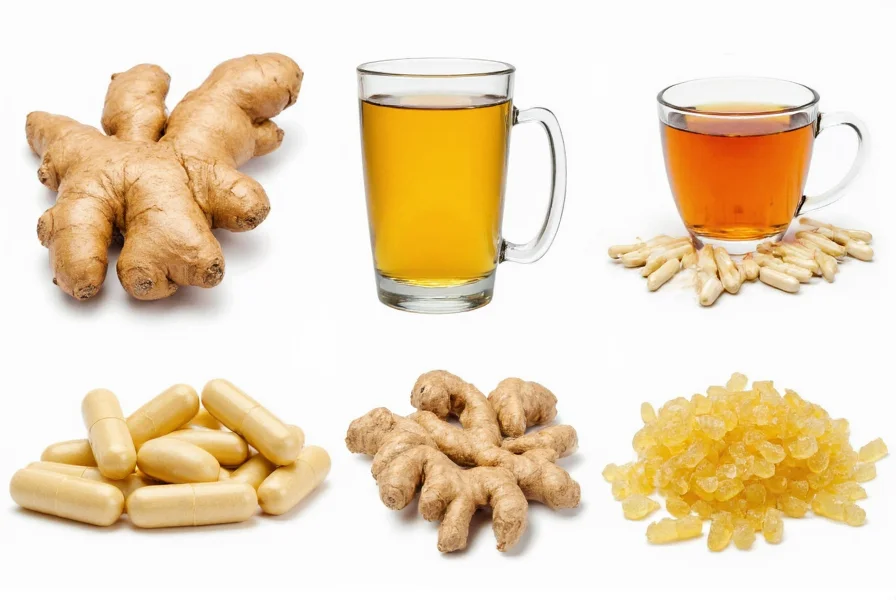Ginger root (Zingiber officinale) has been used in traditional medicine systems for over 2,000 years, but modern science is now validating many of its physiological effects. This ancient spice contains more than 100 bioactive compounds, with gingerols and shogaols being the most extensively studied for their therapeutic properties.
The Science Behind Ginger's Bioactive Compounds
When you consume ginger, its active components undergo metabolic processes that activate multiple physiological pathways. Gingerols, the primary pungent compounds in fresh ginger, transform into shogaols during drying or heating, which increases their bioavailability and potency. These compounds interact with transient receptor potential (TRP) channels in your digestive tract and nervous system, explaining ginger's rapid effects on nausea and digestion.
Evidence-Based Health Benefits of Ginger
Multiple clinical trials and systematic reviews have documented ginger's effects on various bodily systems. Unlike many herbal remedies with limited evidence, ginger has substantial research supporting specific health applications.
Digestive System Enhancement
Ginger accelerates gastric emptying by up to 25% according to research published in European Journal of Gastroenterology & Hepatology. This explains why it effectively relieves bloating and indigestion. The compound [6]-gingerol stimulates motilin secretion, a hormone that regulates digestive tract contractions. For individuals experiencing functional dyspepsia, consuming 1.2 grams of ginger before meals significantly reduces symptoms compared to placebo.
Nausea and Vomiting Relief
One of ginger's most well-documented effects is its ability to reduce nausea through multiple mechanisms. A comprehensive review in Integrative Medicine Insights found ginger effective for:
| Nausea Type | Effective Dosage | Reduction in Symptoms |
|---|---|---|
| Morning sickness | 1-1.5 grams daily | 30-50% improvement |
| Postoperative nausea | 1 gram pre-surgery | 38% reduction |
| Chemotherapy-induced | 0.5-1 gram daily | 40% fewer episodes |
| Travel sickness | 1 gram before travel | 25-35% improvement |
Ginger works by modulating serotonin receptors in the gut and central nervous system, particularly 5-HT3 receptors, which play a key role in nausea pathways.
Anti-Inflammatory and Pain-Relieving Effects
Ginger's anti-inflammatory properties stem from its ability to inhibit cyclooxygenase (COX) and lipoxygenase (LOX) pathways, similar to non-steroidal anti-inflammatory drugs (NSAIDs) but with fewer side effects. In a randomized controlled trial published in Journal of Pain, participants who consumed 2 grams of ginger daily experienced 25% less muscle pain after exercise compared to the control group.
For osteoarthritis patients, ginger extract (340-510 mg daily) demonstrated significant pain reduction after 3-12 weeks of treatment. The anti-inflammatory effects work through multiple mechanisms including suppression of pro-inflammatory cytokines like TNF-α and IL-1β.
Metabolic and Cardiovascular Benefits
Emerging research suggests ginger positively affects metabolic health. A meta-analysis in Nutrition Journal found that ginger supplementation (median dose 2 grams daily for 12 weeks) significantly reduced fasting blood sugar by 12 mg/dL and HbA1c by 0.58% in people with type 2 diabetes. Ginger appears to enhance insulin sensitivity through activation of peroxisome proliferator-activated receptors (PPARs).
Regarding cardiovascular health, ginger may help lower blood pressure and improve lipid profiles. The compound gingerol acts as a calcium channel blocker, promoting vasodilation. Studies show ginger supplementation can reduce LDL cholesterol by approximately 10-15 mg/dL and triglycerides by 25-30 mg/dL.
How Your Body Processes Ginger
When you consume ginger, its bioactive compounds undergo specific metabolic processes:
- Ingestion: Gingerols enter your digestive system
- Metabolism: Liver enzymes convert gingerols to active metabolites
- Distribution: Compounds circulate through bloodstream reaching target tissues
- Mechanism: Interaction with TRP channels, serotonin receptors, and inflammatory pathways
- Elimination: Metabolites excreted through urine and bile
The bioavailability of ginger compounds varies based on preparation method. Fresh ginger provides more gingerols, while dried ginger contains higher concentrations of shogaols, which are more potent but less abundant in fresh root.
Recommended Dosage and Consumption Methods
Research indicates effective doses vary by application:
- Nausea relief: 1-1.5 grams daily, divided doses
- Muscle pain: 2 grams daily
- Osteoarthritis: 500 mg-1 gram, 2-3 times daily
- Blood sugar management: 1.6-2 grams daily
For maximum benefit, consume ginger with food to enhance absorption. Cooking ginger slightly increases shogaol content, while raw ginger preserves more gingerols. A daily intake of up to 4 grams is generally considered safe for most adults, though higher doses may cause gastrointestinal discomfort.

Potential Side Effects and Considerations
While ginger is safe for most people, some individuals may experience:
- Mild heartburn or stomach upset (particularly at higher doses)
- Increased bleeding risk when combined with blood thinners
- Lowered blood pressure (caution for those on hypertension medication)
- Interactions with diabetes medications (may enhance blood sugar lowering)
Pregnant women should limit intake to 1 gram daily during the first trimester. People with gallstones should consult a healthcare provider before regular ginger consumption, as it may increase bile production.
Integrating Ginger Into Your Wellness Routine
To maximize ginger's health benefits while minimizing potential side effects:
- Start with smaller doses (250-500 mg) to assess tolerance
- Pair with black pepper to enhance absorption of active compounds
- Consume with healthy fats to improve bioavailability
- Rotate ginger with other anti-inflammatory foods for synergistic effects
- Monitor your body's response and adjust dosage accordingly
Remember that ginger works best as part of a comprehensive approach to health rather than a standalone solution. Its effects are generally subtle and build over time with consistent use.










 浙公网安备
33010002000092号
浙公网安备
33010002000092号 浙B2-20120091-4
浙B2-20120091-4